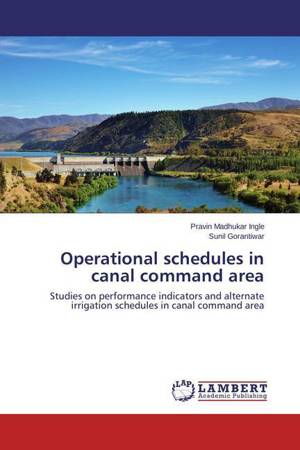
- Afhalen na 1 uur in een winkel met voorraad
- Gratis thuislevering in België vanaf € 30
- Ruim aanbod met 7 miljoen producten
- Afhalen na 1 uur in een winkel met voorraad
- Gratis thuislevering in België vanaf € 30
- Ruim aanbod met 7 miljoen producten
Zoeken
Operational schedules in canal command area
Studies on performance indicators and alternate irrigation schedules in canal command area
Pravin Madhukar Ingle, Sunil Gorantiwar
Paperback | Engels
€ 72,45
+ 144 punten
Omschrijving
In present study the performance parameters such as productivity, equity and adequacy were computed and found that the existing irrigation strategy should be revised to obtain maximum yield and net benefits and in term to achieve more productivity; and to improve the equity and adequacy of water supply in the command area. The alternate schedules were decided on the basis of irrigation intervals and irrigation depth per irrigation at the field level. Amongst all the alternate irrigation schedules, the irrigation schedule with 14 days irrigation interval and 60 mm irrigation depth per irrigation estimated highest net benefits; but maximum net benefits per unit of water delivered were estimated for the irrigation schedule of 21 days irrigation interval and 50 mm irrigation depth per irrigation for Rabi season. The comparison of existing and alternate irrigation schedules indicates the need of formulation and investigation of alternate schedules which would consider the crop and its growth stages and soil while estimating the irrigation depth to be applied per irrigation
Specificaties
Betrokkenen
- Auteur(s):
- Uitgeverij:
Inhoud
- Aantal bladzijden:
- 196
- Taal:
- Engels
Eigenschappen
- Productcode (EAN):
- 9783659706165
- Verschijningsdatum:
- 3/06/2015
- Uitvoering:
- Paperback
- Afmetingen:
- 150 mm x 220 mm
- Gewicht:
- 295 g

Alleen bij Standaard Boekhandel
+ 144 punten op je klantenkaart van Standaard Boekhandel
Beoordelingen
We publiceren alleen reviews die voldoen aan de voorwaarden voor reviews. Bekijk onze voorwaarden voor reviews.








